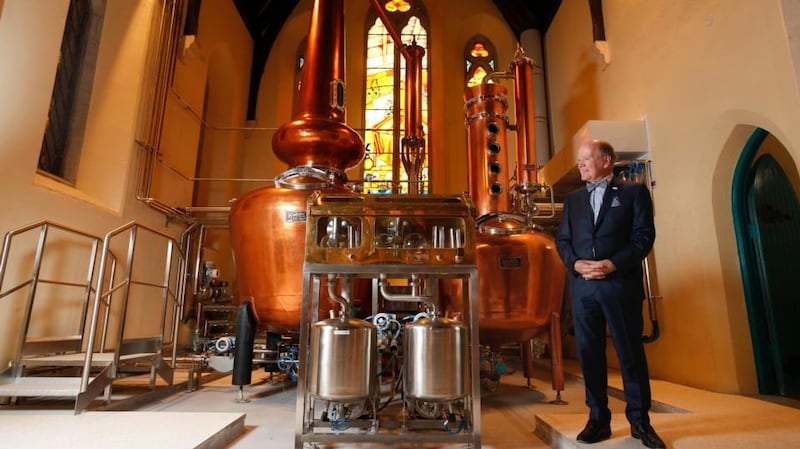Slane Castle is set to become a destination for whiskey lovers with the opening last night of the Slane Distillery and visitors centre. Built within the surroundings of the 250-year-old stables and grain stores, the working distillery expects 40,000 visitors per year initially.
Slane Distillery and visitors centre was unveiled after two years of renovations and preparation. Dating from the 1750s, the buildings are listed and required considerable renovation and conservation work. While most of the distillery inhabits the Georgian stables, additional buildings have been built unobtrusively towards the back of the site.
The idea for the distillery came from Lord Henry Mount Charles and his son, Alex Conynham. It was brought to fruition by the acquisition in 2015 of Slane Whiskey by US company Brown Forman, makers of Jack Daniels and other beverages. Brown Forman has invested in the region of €45 million in the project and the Conyngham family will continue to be involved.
Alex Conyngham has been involved in the whiskey project since 2009. Slane Whiskey has already been on sale and has 600 accounts in Ireland. It will now be distributed to 10,000 outlets in the US.
To establish and develop the brand, "we acquired whiskey from other Irish manufacturers and all our product is at least three years old", Conyngham says. The whiskey is triple-casked in virgin American oak casks, seasoned Tennessee whiskey casks and in Spanish Oloroso sherry casks. The triple casking gives the whiskey its distinctive taste and toffee-amber colour, and the whiskey will retail at €33 for a 750ml bottle. The three copper pot stills and six column stills will come into production in the next month or so and the final touches are being put to the buildings.
The Slane estate is an ideal location for the distillery and is planned to be as sustainable as possible. Barley will be grown on the estate land – there are sufficient yields of up to 2,000 tonnes per year – and water will be fed from the Boyne river.
Visitors will be able to taste whiskey in the Stalls Bar. There will also be a cafe and a retail unit which will also sell vinyl records of bands that played there over the 30 year period.
Slane Distillery opens to the public on September 2nd. The tour costs €18 for adults, €16 for seniors, students and 6-17 year olds, under fives free, 20 per cent discount until the end of September, slaneirishwhiskey.com

Meanwhile, on Saturday, August 26th, another new distillery will open in Dublin. The Pearse Lyons Distillery in St James's Church on James's Street has transformed the old church into a working distillery. The renovation and transformation of the national historic monument began in 2014. It will distil the Pearse Lyons range of whiskeys.
Irish-born Pearse Lyons and his wife Deirdre are founders of Alltech, a $2.1 billion (€1.9bn) animal nutrition company based in Nicolasville, Kentucky and a European Bioscience Centre in Dunboyne, Co Meath. They also own a brewery and distillery in Kentucky.
The boutique distillery is expected to produce up to 1,000 litres of whiskey per week. Visitor numbers are expects to be in the region of 75,000 per annum. The Irish Whiskey Association’s tourism strategy optimistically envisages a growth of no less than 1.9 million visitors by 2025.
In 2013 there were just four distilleries in options, none of them in Dublin. Now there and 17 operating and 13 more with planning permission.



















